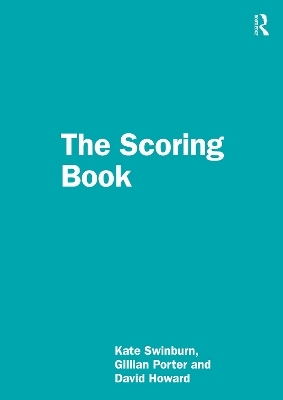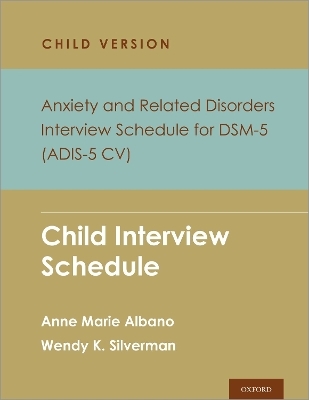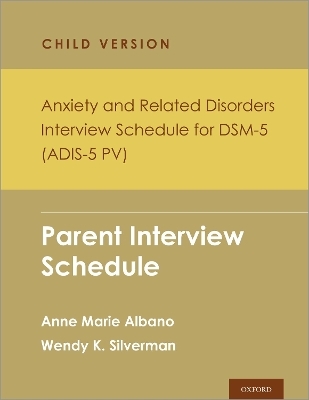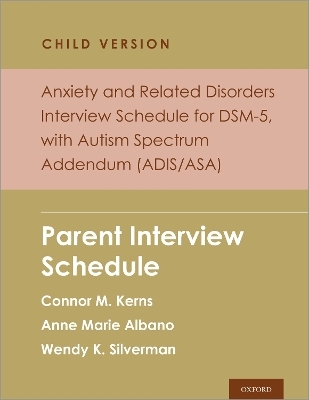
Comprehensive Aphasia Test
Routledge
978-1-032-12817-7 (ISBN)
The Comprehensive Aphasia Test (CAT) is a test for people who have acquired aphasia and can be completed over one or two assessment sessions. The test includes a user manual, a ring-bound cognitive screen and language battery a scoring booklet, and - new to this release - a concise Aphasia Impact Questionnaire which replaces the former Disability Questionnaire. The cognitive section assesses people's abilities across a range of task that can affect rehabilitation. Forming the main body of the test, the language battery provides a profile of performance across all modalities of language production and comprehension. The Aphasia Impact Questionnaire was co-produced with people with aphasia. It is a pictorial Patient Reported Outcome Measure, which produces both qualitative and quantitative information. It supports the person with aphasia to give a subjective rating of how language difficulties identified in the Language Battery affect their daily life, enabling first steps towards goal setting.
In addition, the CAT helps the therapist to track changes over the course of recovery and provides a guide to likely outcomes on the basis of an early assessment. It is supported by normative data on people both with and without aphasia, and extensive data on reliability and clinical validity. The CAT allows users to:
• Identify underlying impairments
• Find where to focus assessments using PALPA and other batteries
• Ascertain the practical, psychological, and social impact of aphasia, from the perceptive of the person with aphasia
• Create a profile of strengths and weaknesses to guide therapy.
Structured around fully up-to-date models of language processing from cognitive neuropsychology this test is an indispensable resource for speech and language therapists and researchers. It provides as much information about people's language ability as possible in a relatively brief test designed to be completed in 90-120 minutes.
Dr Kate Swinburn is a speech and language therapist and freelance academic. She worked in the NHS and in the charity sector each for 10 years. In the NHS she worked with adults with neurological impairments. At Connect Kate was responsible for training, publications, and national policy. Her academic interests focus on people with acquired communication disability (particularly those with aphasia and dementia), working alongside them during co-produced projects, integrating the social model of disability into the research agenda, especially into outcome measurement. She is a member of the international network Collaboration of Aphasia Trialists supporting the adaptation of both the Comprehensive Aphasia Test and the Aphasia Impact Questionnaire into multiple languages (currently 28). She is an honorary lecturer at University College London and a Fellow of the Royal College of Speech and Language Therapists. Gillian Porter is a Speech and Language Therapist who has worked solely in the NHS. As well as her clinical work she has been the service lead for Speech & Language Therapy across acute, and community services, and county-wide professional lead for Speech and language Therapy. Her special interest is working with adults with neurological disorders. Professor David Howard is both a speech and language therapist and cognitive neuropsychologist. His research is on the cognitive neuropsychology of language, including written and spoken word comprehension and production as well as syntactic processing. Drawing data from both data from people with aphasia, and normal participants and brain imaging he wants to develop good computational models of word processing. He is a Fellow of the Royal College of Speech and Language Therapists.
THE COGNITIVE SCREEN
1. Line bisection
2. Semantic memory
3. Word fluency
4. Recognition memory
5. Gesture object use
6. Arithmetic
THE LANGUAGE BATTERY
Part 1: Language comprehension
7. Comprehension of spoken words
8. Comprehension of written words
9. Comprehension of spoken sentences
10. Comprehension of written sentences
11. Comprehension of spoken paragraphs
Part 2: Expressive language
Repetition
12. Repetition of words
13. Repetition of complex words
14. Repetition of nonwords
15. Repetition of digit strings
16. Repetition of sentences
Spoken language production
17. Naming objects
18. Naming actions
19. Spoken picture description
Reading aloud
20. Reading words
21. Reading complex words
22. Reading function words
23. Reading nonwords
Writing
24. Writing: Copying
25. Writing picture names
26. Writing to dictation
27. Written picture description
THE APHASIA IMPACT QUESTIONNAIRE
28. Communication
29. Participation
30. Emotional Well-Being
| Erscheint lt. Verlag | 10.4.2023 |
|---|---|
| Zusatzinfo | 1 Line drawings, black and white; 1 Illustrations, black and white |
| Verlagsort | London |
| Sprache | englisch |
| Maße | 210 x 297 mm |
| Gewicht | 1355 g |
| Themenwelt | Geisteswissenschaften ► Psychologie ► Biopsychologie / Neurowissenschaften |
| Medizin / Pharmazie ► Gesundheitsfachberufe ► Logopädie | |
| ISBN-10 | 1-032-12817-8 / 1032128178 |
| ISBN-13 | 978-1-032-12817-7 / 9781032128177 |
| Zustand | Neuware |
| Haben Sie eine Frage zum Produkt? |
aus dem Bereich


